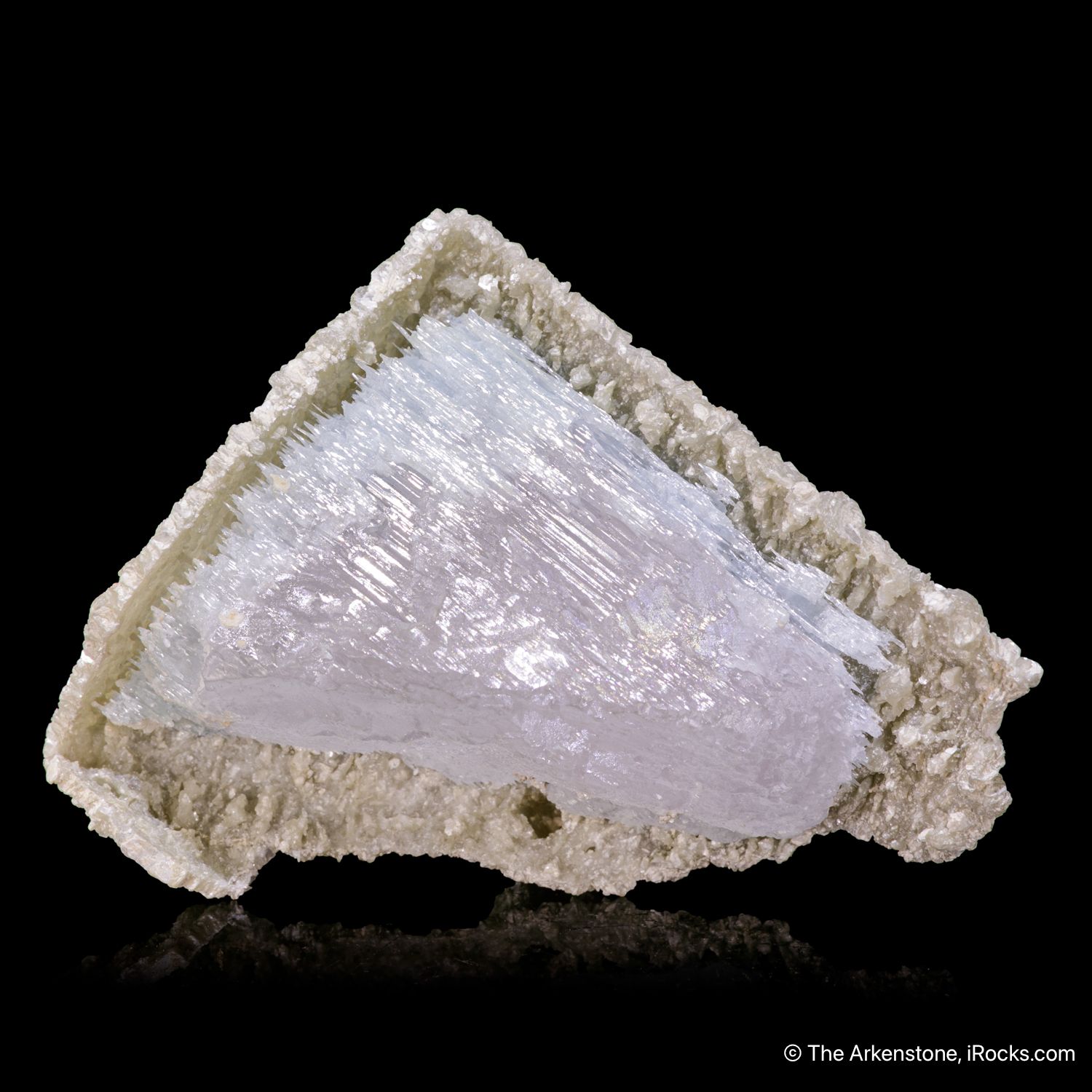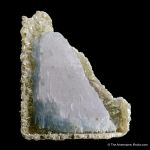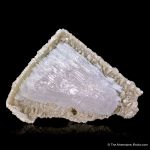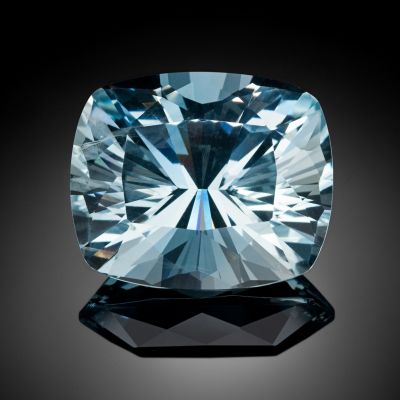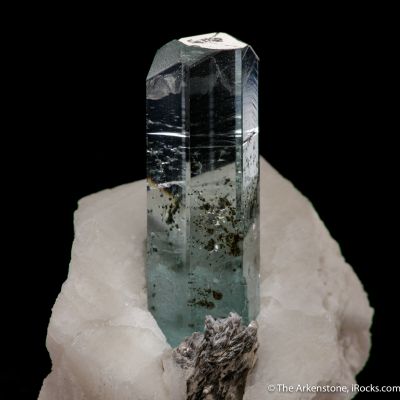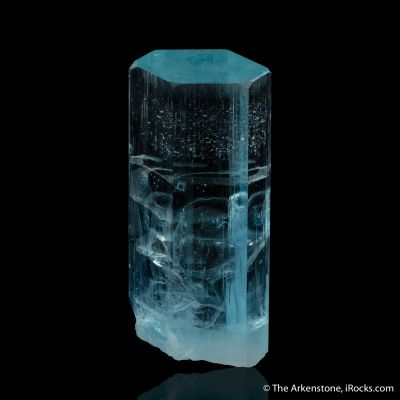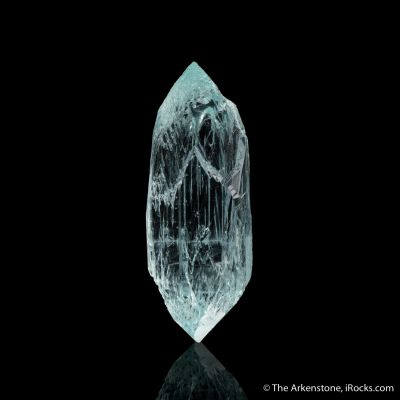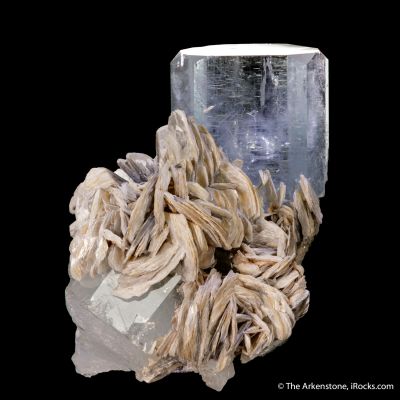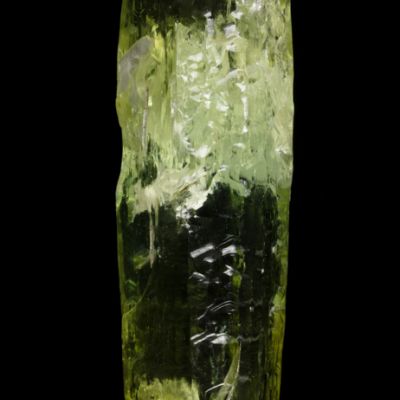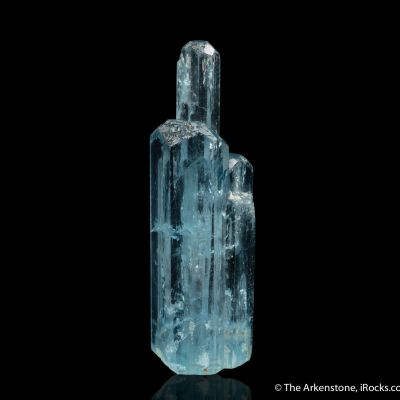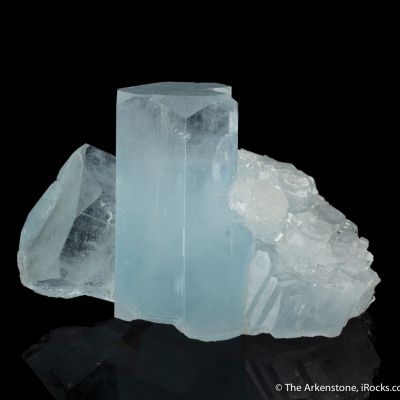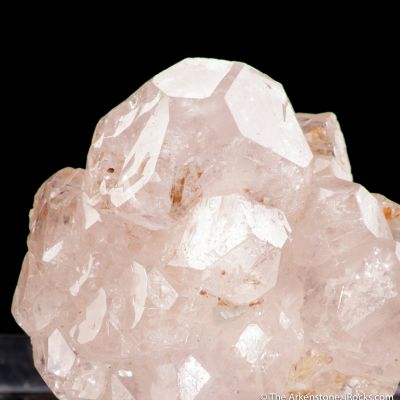- SM24-020
- Beryl var. Morganite & Aquamarine in Cookeite cast
- Baha, Shigar Dist., Gilgit-Baltistan, Pakistan
- Small Cabinet, 7.2 x 6.3 x 3.1 cm
- Ex. Herb Obodda
- SOLD
A fascinating specimen that literally shows part of the complex history of how gem mineral crystals form (and deform) in their natural environments in a gem pegmatite deposit, this is a floater specimen that is complete all around and features a bicolored beryl, with both morganite and aquamarine in the same crystal, "floating" inside a hollow cast of another mineral species. The subtle details suggest etching and patterning, but are not actually due to etching so much as another process - where the existing mineral in its original hexagonal form was resorbed into solution in the same original pocket, perhaps even soon after formation. This would have been under tremendous heat and pressure, and this process forced several changes on the original hexagonal beryl crystal. Firstly, the surface started disappearing into the solution even as a cast of cookeite formed atop the original surface, preserving the hexagonal form. Then, the missing volume of matter caused the crystal to lose volume and appear to "shrink back" as if it was huddling under the blanket over the now-missing termination. And, for all that, it is still complete all around because the process happened from all sides, leaving a floater specimen. It is thought that many of these cast/pseudomorph replacement processes happen soon after the original crystals form, in the same conditions, as the crystals grow and shrink in a continually changing broth of hot fluids coursing through a pegmatite pocket as it forms. A process like this might usually cause the crystal to fall out of the cast, or shrink to meaningless size, but here we have both preserved in a proportional - and educational - balance. To see something this sharp, with such contrast and quality both, is very rare. This is #1944 from the personal collection of dealer Herb Obodda. Herb literally opened up Pakistan for mineral exports in the 1970s and on, and he kept a choice collection of perfect specimens in all size classes, to remember his travels and adventures. We were fortunate to buy his collection around 2010, during which we first obtained this specimen (it later sold, and recently came back to us). It remains memorable!



